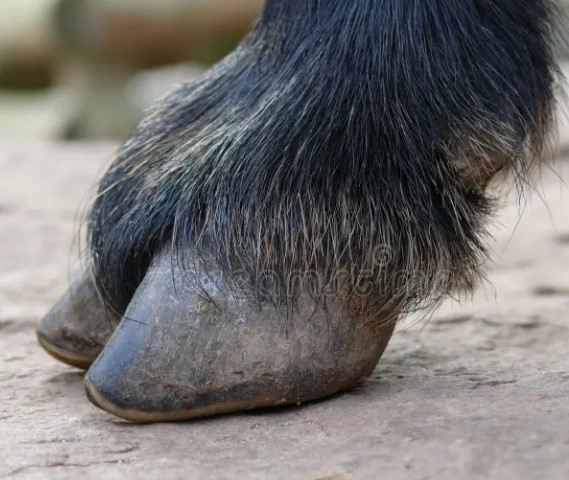New fever-causing genipavirus identified in China

In CHINA, 35 patients have been identified with a fever believed to be caused by a new virus that can be transmitted from shrews to humans. A study on the pathogen was published by scientists from Beijing and Singapore in early August in The New England Journal of Medicine.
During epidemic surveillance of patients with symptoms of fever in East China, the Langya henipavirus (LayV) virus was detected in a throat swab from one patient. "A subsequent investigation identified 35 patients with acute LayV infection in Shandong and Henan provinces, among whom 26 were infected with LayV alone and no other pathogens were present," the publication says.
These 26 patients experienced fever and chills (in 100% of cases), fatigue (54%), cough (50%), anorexia (50%), muscle pain (46%), nausea (38%), headache ( 35%), vomiting (35%), which was accompanied by a drop in the level of platelets in the blood (35%), leukopenia (decrease in the number of leukocytes - in 54% of cases), as well as impaired liver function (35%) and kidneys (8%). There were no deaths among those examined.
The surveyed did not contact each other, which made it possible to assume that these are so far isolated, unrelated cases. The researchers also did not identify cases of transmission of the virus from sick people to their family members, but they note that so far too little data has been collected to make final conclusions.
The LayV virus belongs to the same genus of henipaviruses as the potentially deadly Nipah and Hendra viruses, which are transmitted from animals to humans, the study says.
video
Virologists assessed the possibility and timing of a new wave of covid-19 Society Read on RBC Pro Pro Companies are changing software at extreme speeds.What Mistakes They Make Instructions Pro x The Economist Inflation 160%:why the Turkish authorities can't contain the rise in pricesWhat Investors Should Do Articles Pro Save yourself from the FTS:how to avoid accusations of cashing out for an honest companyPro Ban on the marketplace: what is the risk of the seller of goods of parallel imports15am Pro Articles What you need to know about buying property in Thailand:nuances and tips Articles
Serological examination of animals revealed that antibodies to the virus were in a small percentage of goats and dogs, as well as in 76% of the examined shrews. "This suggests that shrews may be a natural reservoir for LayV," the publication says.
At the end of 2019, the Sars-Cov-2 CORONAVIRUS was detected in China, which quickly spread outside the country and caused the COVID-19 pandemic. According to Johns Hopkins University, which monitors the situation with the infection, by August 8, 2022, 584 million cases of COVID-19 were detected in the world, and 6.4 million patients died.
At the end of July, WHO declared the spread of another disease, monkeypox, a situation of emergency. According to the organization, as of June 27, more than 16 thousand cases of the disease in 75 countries and five deaths were detected in the world.
Read together with it:
- Maduro has given himself new powers in the event of war with the United States.As the Venezuelan Vice President clarified, the decree will come into force in the event of external aggression, which could be based on US military intervention. Venezuelan President Nicolás Maduro signed a decree granting him additional security powers in the event of a military invasion of the country, Venezuelan Vice President Delcy Rodríguez announced, Finanzas Digital reports. She announced ...
- Как победить "осенний синдром"? Очень простые советы для хорошего самочувствияСнизилась концентрация, ощущается упадок сил и весь день клонит ко сну? Это межсезонье, которое идет в комплекте с простудами и вирусами. Как не заболеть осенью - разбираемся вместе с врачом общей практики. Время укреплять иммунитет При смене летнего сезона на осенний замедляются все природные процессы. Организм человека тоже перестраивается, поэтому требует меньше внешних раздражителей и больше с...
- В Венгрии подсчитали убытки из-за отказа от российского газаВенгрия может потерять $10 млрд из-за отказа от российского газа. Глава администрации премьер-министра страны заявил, что энергетическое эмбарго, запланированное на конец 2027 года, представляет для Венгрии угрозу Гергей Гуйяш Отказ от российского газа в рамках разработанного Европейской комиссией плана обойдется Венгрии в 4% ВВП, заявил глава администрации премьер-министра страны Гергей Гуйяш на ...
- Bloomberg назвал условие Индии для отказа от российской нефтиИндийские чиновники заявили Вашингтону, что сокращение импорта российской нефти потребует от США разрешить закупки у находящихся под санкциями поставщиков — Ирана и Венесуэлы. Иначе есть риск роста мировых цен на нефтепродукты Индия готова сократить импорт российской нефти при условии снятия американских санкций с двух других поставщиков — Ирана и Венесуэлы. Об этом индийские чиновники сообщили на...
- Новые технологии: Продление жизнеспособности спермы быков с помощью стволовых клетокИсследование показало, что применение лизата значительно улучшает сохранение жизнеспособности сперматозоидов, при этом после четырех часов наблюдалось 41% прогрессивно подвижных клеток и 62% морфологически нормальных. В отличие от этого, кондиционированная среда продемонстрировала менее эффективные результаты, сохранив жизнеспособность всего на два часа. Эти результаты открывают новые горизонты дл...





























































